If someone told you certain things would increase the risk of developing breast cancer, would you avoid it? Some of you would say yes regardless of what it was, some would say it depends, and some wouldn’t care. As adults and humans, we’re bound to play the odds. Is the convenience or the other benefits worth the increase in risk? If it isn’t, we’ll avoid it, but sometimes we accept that is. Smokers know that they stand a higher chance of developing lung cancer if they smoke, but to some of them, the cost of quitting is greater than the reduction in risk they’ll have. Why? Because despite all the ads and public health warnings, cancer isn’t as deadly and pervasive as health officials make it out to be. Now, don’t get me wrong, the risk is real and it’s there, but many of us go our lives without thinking of it. And those we know who get it may not do so until later in life and many will get better. So we weigh the odds. This is part of the reason why, despite a plethora of studies outlining the fact that not breastfeeding serves to increase the risk of breast, cervical, uterine, and endometrial cancer The question about risks also has to be asked about childhood cancer. It has long been listed as one of the things for which there is an increased risk associated with formula use, but many people suggest the evidence is equivocal. If parents are going to make an informed decision about the risks, then we need to know what the research is saying and why it can seem so darn confusing. The Evidence (Notably here I will revert to using the language of the research which uses a “reduced risk” model for breastfeeding, despite it being the other way around as breastfeeding is the norm. Part of this is so people who read the original sources are not confused, but also because when I provide odds-ratios, I can just take them from the articles and not have to work out what the flip side would be.) What were the problems? A couple things about this study are worth mentioning: a) they removed cases in which symptoms of cancer occurred in the first nine months or the child died in the first year, which may be where the effects of breastfeeding are strongest (though I certainly don’t know this for a fact, but it is reasonable); and b) they did not examine exclusive breastfeeding, but rather any breastfeeding (this is important as the effects of breastfeeding are known to be strongest when breastfeeding is exclusive and it is also difficult to ascertain how little or how much women were breastfeeding when any breastfeeding is the variable of interest). In China, researchers found a slight reduction in risk for lymphoma for those infants ever breastfed which was slightly greater for longer-term breastfeeding. Notably, the effects pertained primarily to Hodgkin’s disease and there was no relationship to acute leukemia[6]. Interestingly, breastfeeding rates in China in the mid-1990s were relatively high compared to the US (though it did seem to vary by region) (any: 94%, 82%, and 72% at 1, 4, and 6 months)[7]. Returning to the UK, research examined various factors predicting incidents of childhood cancer in a national cohort. They examined breastfeeding, but only breastfeeding in the first week of life. Despite the short time-frame, 46% of controls received breastmilk in the first week while only 28% of children who developed cancer received any breastmilk[8]. This early influence of breastmilk highlights the potential flaw in the OSCC data which excluded children who were symptomatic in the first year of life; if exposure to breastmilk in the first week of life is related to a decreased risk of developing cancer later on, it may be particularly salient in the first year. The research from China and the UK is enhanced by more conclusive evidence from the US and India. A case-controlled study in the US examined the role of breastfeeding by dividing groups into > 6 months breastfeeding, 6 months breastfeeding, and artificial feeding. Compared to the > 6 months group, there was an increased risk of all types of cancers for the 6 months breastfeeding and artificial feeding groups. Despite the results being significant across all types of cancer, the results seemed to be driven primarily by a large significant protection for lymphoma[9]. An Indian case study examining childhood cancer rates and the effects of breastfeeding also found a significant effect of average duration of breastfeeding and an even larger effect for exclusive breastfeeding on distinguishing between the two groups. Again, while the results translated across the entire group, they were driven by the highly significant relationship between breastfeeding and lymphoma, as an examination of breastfeeding and all other types of cancer was non-significant[10]. Why would this study find a relationship that none of the aforementioned studies did? It seems that even within ALL and AML, there are subtypes that are differentially affected by exposure to breastmilk. Shu and colleagues also performed an analysis by subtype of ALL and AML, something previous research had failed to do. What they found was that the reduced risk in AML cases only existed for certain subtypes, namely myeloblastic with no maturation, myeloblastic with minimal maturation, and myeloblastic with maturation. Similarly, extended breastfeeding only protected against Early Pre-B-Cell ALL and having ever breastfed only provided protection against Pre-B-Cell ALL. This means that while breastfeeding may not provide protection for all types of leukemia, it does offer protection against some of the subtypes of acute leukemia; thus some of the previous research looking at all types of ALL and AML would be biased towards non-significance. In line with this research, and perhaps more conclusively, researchers at UC Berkeley performed a meta-analysis of 14 studies examining the relationship between breastfeeding and two types of childhood cancer: ALL and AML. [For those who are unaware, a meta-analysis is considered the gold standard of conclusiveness for research as it combines the data from many studies and analyzes them together. This means that any individual flaw or bias in any one article gets weighed out by the many other studies in the meta-analysis. Of course, a meta-analysis is only as good as the collective data included and so one must be sure that stringent criteria were met to decide what to include. ] They divided the data by short- (<= 6 months) and long-term (> 6 months) breastfeeding, which is important because of the findings to do with breastfeeding duration mentioned above, and found significant negative relationships between breastfeeding and both ALL and AML. While results were significant for both short- and long-term breastfeeding, the results were much stronger for long-term breastfeeding[14]. Given this data, we must ask ourselves why so few parents are made aware of this information. One of the problems may be that, for unknown reasons, researchers seem hesitant to believe or support their findings. In a different meta-analysis the authors reported having found no effect of breastfeeding to most types of childhood cancers, except that wasn’t what their data found. If you look at their data, they found significant protective effects for acute lymphoblastic leukemia, Hodgkin’s disease, and neuroblastoma (with a 9%, 24% , and 41% reduction in risk, respectively). Furthermore, their analysis for breastfeeding was only a comparison of “ever breastfed” versus “never”[15], which as we know tends to lower the likelihood of finding anything significant. If the researchers who find these results don’t support them, how are parents supposed to know about and utilize this information? (I personally wonder if these scientists are towing a political line that doesn’t want to acknowledge these benefits because then they might actually have to support policies that allow for women to breastfeed instead of forcing them back to work too early or providing proper support in the form of lactation consultants and other specialists.) A Cross-Cultural Story A comparison of the rates of cancer is impossible as the diagnosis and treatment of cancer in Africa is qualitatively different than that in North America, it is interesting to note that on a continent where breastfeeding and extended breastfeeding are common—only 3.9% of babies receive no breastmilk in the first six months, 8.2% receive no breastmilk from 6 months to a year, and only 30.1% of infants do not breastfeed in the second year of life[18]—the rates of childhood cancers that are affected by breastfeeding are much lower than in other areas of the world. Of course, none of this is causal and more research would need to be done to make firm conclusions, but combined with the evidence we see on childhood cancer and breastfeeding, it’s hard not to think something’s going on. Implications Is the data absolutely clear cut? No. But given what we have, the evidence falls more in line with an increased risk of certain types of childhood cancers (not all) with not breastfeeding, and particularly, not breastfeeding six months. More research is needed to clarify these relationships, but as we delve deeper and into more specific findings, hopefully that becomes possible. Of course, to note again, the risk of these cancers is still quite small and so although there is an increased risk for not breastfeeding, the absolute risk remains quite small. This is where risk-benefit analysis will become very personal. For some people, this matters greatly. For others, the influence isn’t nearly as great. That’s a personal decision. I would be remiss to not discuss the issue of women who cannot breastfeed. Taking on risks you don’t desire to take on can lead to immense grief and pain. It’s not fair, but it’s life. What we can do is work to make donor breastmilk more available and make sure the emotional support is there for these women. The goal in talking about research is not to try and make people feel bad but to share information and find ways to create better scenarios for those who have to unwillingly accept the risks. Many mums are unable to physically feed their baby for various reasons, and as such there is always ample need for a mother’s breastmilk to help those mums who can’t breastfeed their child on their own. If you live in Australia, it seems that there are 4 milk banks: Mothers’ Milk Bank in northern New South Wales (www.mothersmilkbank.com.au), the PREM Bank in Perth, Western Australia (https://www.kemh.health.wa.gov.au/Our-services/Service-directory/Prem-Milk-Bank), the Mercy Health Breastmilk Bank in Victoria (www.mercyhealthbreastmilkbank.com.au) and a new one just opened in the last few weeks at the Royal Brisbane and Women’s Hospital in Brisbane, Queensland (http://www.rbwhfoundation.com.au). If you live in New Zealand, there is currently no milk bank, but there is a non-profit group, Mothers Milk NZ, working towards the development of a national milk bank. If you live in Canada, there are now two milk banks. The first is run by Women’s Hospital in Vancouver, BC. Although located on the west coast, women from all over the country can both utilize and donate to it. For more information, please go tohttp://www.bcwomens.ca/our-services/labour-birth-post-birth-care/milk-bankfor a list of FAQs and contact information. The second is in Toronto, ON, and is a partnership amongst three hospitals in Toronto. They accept donations from all over and will cover the cost of shipping milk to the bank. For more information, please go to http://www.milkbankontario.ca/ for all the information you need! If you live in the United States, several states have milk banks which you can contact to see if they have milk you can purchase. I don’t know how each of them sets their standards or if they mail milk out-of-state (if you live in a state without a milk bank), but a list of all the milk banks in the US, with contact information, can be found here: https://www.hmbana.org/find-a-milk-bank/. If you live in the United Kingdom, you have 17 milk banks (go you!) and the primary site with information and how to donate is found at http://www.ukamb.org/. And of course, no matter where you live there are the always-wonderful Human Milk 4 Human Babies andEats on Feets networks which are (nearly) global. Here you will be able to network with other mums who may live in your area and have breastmilk for you. This is not a regulated endeavor and is running solely on the goodwill of mothers everywhere. Good luck and happy feeding! [1] Rosenblatt KA, Thomas DB, and the WHO collaborative study of neoplasia and steroid contraceptives. Prolonged Lactation and endometrial cancer. International Journal of Epidemiology (1995); 24: 499-503. [2] Collaborative Group on Hormonal Factors in Breast Cancer. Breast cancer and breastfeeding: collaborative reanalysis of individual data from 47 epidemiological studies in 30 countries, including 50302 women with breast cancer and 96973 women without the disease. Lancet (2002); 360: 187-95. [3] Rosenblatt KA, Thomas DB, and the WHO collaborative study of neoplasia and steroid contraceptives. Lactation and the risk of epithelial ovarian cancer. International Journal of Epidemiology (1993); 22: 192-7. [4] Brock KE, Berry G, Brinton LA, Kerr C, MacLennan R, Mock PA, & Shearman RP. Sexual, reproductive and contraceptive risk factors for carcinoma-in-situ of the uterine cervix in Sydney. The Medical Journal of Australia (1989); 150: 125-30. [5] Lancashire RJ & Sorahan T. Breastfeeding and childhood cancer risks: OSCC data. British Journal of Cancer (2003); 88: 1035-1037. [6] Shu X, Clemens J, Zheng W, Ying DM, Ji BT, & Jin F. Infant breastfeeding and the risk of childhood lymphoma and leukaemia. International Journal of Epidemiology (1995); 24: 27-32. [7] Xu F, Lui X, Binns CW, Xiao C, Wu J, & Lee AH. A decade of change in breastfeeding in China’s far north-west. International Breastfeeding Journal (2006); 1: 22. [8] Golding J, Paterson M, & Kinlen J. Factors associated with childhood cancer in a national cohort study. British Journal of Cancer (1990); 62: 304-308. [9] Davis MK, Savitz DA, & Graubard AI. Infant feeding and childhood cancer. The Lancet (1988); 332: 365-368. [10] Mathur GP, Gupta N, Mathur S, Gupta V, Pradhan S, et al. Breastfeeding and childhood cancer. Indian Pediatrics (1993); 30: 651-657. [11] Roman E, Simpson J, Ansell P, Kinsey S, Mitchell CD, McKinney PA, et al. Childhood acute lymphoblastic leukemia and infections in the first year of life: a report from the United Kingdom childhood cancer study. American Journal of Epidemiology (2007); 165: 496-504. [12] Duijts L, Jaddoe VWV, Hofman A, & Moll HA. Prolonged and exclusive breastfeeding reduces the risk of infectious diseases in infancy. Pediatrics 2010; 126: e18-e25. [13] Shu XO, Linet MS, Steinbuch M, Wen WQ, Buckley JD, Neglia JP, et al. Breast-feeding and risk of childhood acute leukemia. Journal of the National Cancer Institute (1999); 91: 1765-1772. [14] Kwan ML, Buffler PA, Abrams B, & Kiley VA. Breastfeeding and the risk of childhood leukemia: a meta-analysis. Public Health Reports (2004); 119: 521-535. [15] Martin RM, Gunnell D, Owen CG, & Smith GD. Breast-feeding and childhood cancer: a systematic review with metaanalysis. International Journal of Cancer (2005); 117: 1020-1031. [16] American Cancer Society. Global Cancer Facts & Figures, 2nd Edition. Atlanta: American Cancer Society; 2011 [17] (Accessed November 10, 2011) [18] Lauer JA, Betran AP, Victora CG, de Onis M, & Barros AJD. Breastfeeding patterns and exposure to suboptimal breastfeeding among children in developing countries: review and analysis of nationally representative surveys. BMC Medicine (2004); 2: 26.
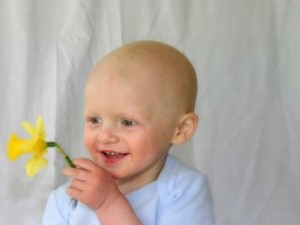 First, let’s be clear that not all findings support the notion that breastfeeding reduces the risk of childhood cancer, but many methodological limitations make conclusions difficult to come by. For example, data from the Oxford Survey of Childhood Cancers (OSCC) in the UK looked at the data from thousands of children to try and establish a link between breastfeeding and cancer. The authors found no relationship at all by any length of breastfeeding (examined at < 1 month, 1-6 months, and >= 7 months)[5].
First, let’s be clear that not all findings support the notion that breastfeeding reduces the risk of childhood cancer, but many methodological limitations make conclusions difficult to come by. For example, data from the Oxford Survey of Childhood Cancers (OSCC) in the UK looked at the data from thousands of children to try and establish a link between breastfeeding and cancer. The authors found no relationship at all by any length of breastfeeding (examined at < 1 month, 1-6 months, and >= 7 months)[5].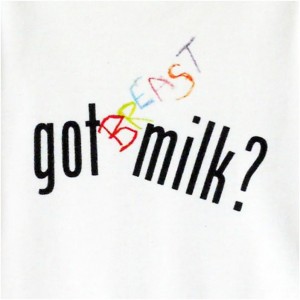 This starts to look like some relatively strong evidence for a role of not breastfeeding in lymphomas; however, these are not so common. The data for the most common type of childhood cancer – leukemia – is more controversial. While not looking at breastfeeding directly, one UK study examined how infections in the first year of life predicted later development of ALL. The authors found that children who later developed ALL had a significantly greater number of clinically-diagnosed infections in the first year of life (i.e., we’re not talking about the common cold)[11]. Given the relationship between breastfeeding and a reduction in infections[12], it seems plausible that breastfeeding may also reduce the incidence of ALL, despite previous non-significant results, but this is simply guesswork. Although the previous studies failed to find evidence of protection for ALL and AML childhood cancers, Xiao Shu and colleagues examined data from the Children’s Cancer Group (which collects data from the United States, Canada, and Australia) for possible breastfeeding benefits. They found no significant association between ever breastfeeding and AML status and only a very slight protective benefit for ALL. However, when duration of breastfeeding was examined, children who had breastfed for longer than six months had a 43% reduction in risk for AML and a 28% reduction in risk for ALL[13]. Already we start to see the issue of breastfeeding duration being one that requires greater examination.
This starts to look like some relatively strong evidence for a role of not breastfeeding in lymphomas; however, these are not so common. The data for the most common type of childhood cancer – leukemia – is more controversial. While not looking at breastfeeding directly, one UK study examined how infections in the first year of life predicted later development of ALL. The authors found that children who later developed ALL had a significantly greater number of clinically-diagnosed infections in the first year of life (i.e., we’re not talking about the common cold)[11]. Given the relationship between breastfeeding and a reduction in infections[12], it seems plausible that breastfeeding may also reduce the incidence of ALL, despite previous non-significant results, but this is simply guesswork. Although the previous studies failed to find evidence of protection for ALL and AML childhood cancers, Xiao Shu and colleagues examined data from the Children’s Cancer Group (which collects data from the United States, Canada, and Australia) for possible breastfeeding benefits. They found no significant association between ever breastfeeding and AML status and only a very slight protective benefit for ALL. However, when duration of breastfeeding was examined, children who had breastfed for longer than six months had a 43% reduction in risk for AML and a 28% reduction in risk for ALL[13]. Already we start to see the issue of breastfeeding duration being one that requires greater examination.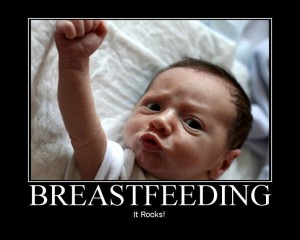 While the rates of childhood cancer are 14.3 per 100,000 worldwide, according to the American Cancer Society, rates and types vary by location. It is the variety in types that interested me most and that I wanted to share. Based on the above evidence, it seems fair to say that breastfeeding holds its power to reduce risk on leukemias, lymphomas, and neuroblastomas. Data from the American Cancer Society’s Global Cancer Facts and Figures, 2nd Edition tells us that leukemia is the most common form of cancer in most parts of the world, and especially in Western nations, but is a rarity in Africa. In fact, if we examine the predominance of types of cancers in Europe versus Africa, an interesting picture emerges. While leukemia, lymphoma, and neuroblastomas make up 49% of childhood cancer cases in North America, they make up 21% of cases in Africa[16] (not including Burkitt lymphomas as they are linked to the Epstein-Barr virus and thus occur nearly exclusively in Africa and seem unrelated to other types of lymphomas[17]).
While the rates of childhood cancer are 14.3 per 100,000 worldwide, according to the American Cancer Society, rates and types vary by location. It is the variety in types that interested me most and that I wanted to share. Based on the above evidence, it seems fair to say that breastfeeding holds its power to reduce risk on leukemias, lymphomas, and neuroblastomas. Data from the American Cancer Society’s Global Cancer Facts and Figures, 2nd Edition tells us that leukemia is the most common form of cancer in most parts of the world, and especially in Western nations, but is a rarity in Africa. In fact, if we examine the predominance of types of cancers in Europe versus Africa, an interesting picture emerges. While leukemia, lymphoma, and neuroblastomas make up 49% of childhood cancer cases in North America, they make up 21% of cases in Africa[16] (not including Burkitt lymphomas as they are linked to the Epstein-Barr virus and thus occur nearly exclusively in Africa and seem unrelated to other types of lymphomas[17]).
Two B’s and the Big C
[1][2][3][4], not all women choose to breastfeed. Now some don’t do so because they are unaware of the benefits those two boobs can provide for them, but some know of the risk and choose not to breastfeed anyway because in their view, the risk is so minimal that it’s not worth their perceived hassle of breastfeeding and that’s okay – that’s their educated choice to make. (Some don’t have a choice and have to accept the risks and that can suck, but there are times in all our lives we’re forced to accept risks we don’t want to take.)

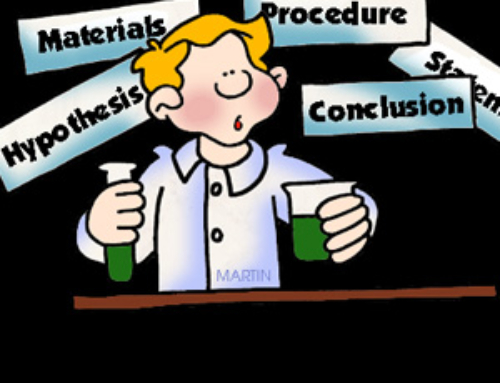
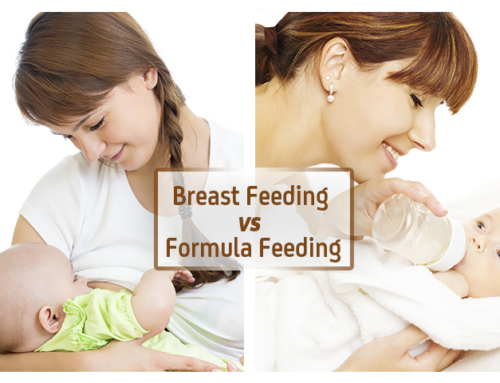
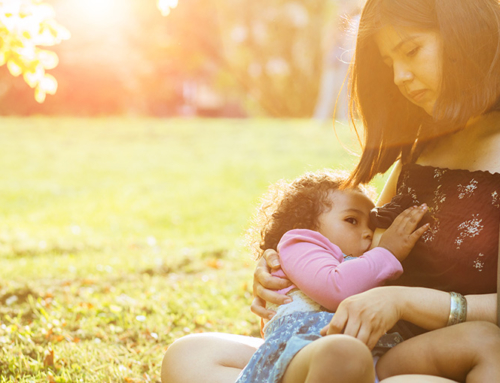
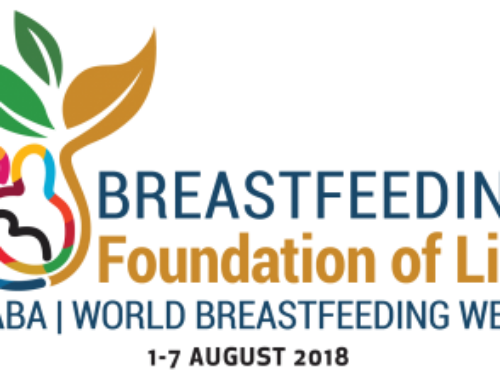
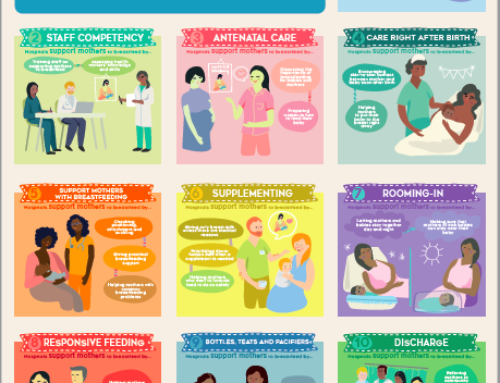
[…] like the idea of removing formula from grocery stor … … Originally posted here: Two Bs and the Big C | Evolutionary Parenting | Breastfeeding and … ← Different Methods of Birth Control Tired of No Results? Try the Best Pregnancy Diet […]
Nice one, as usual. I told my husband that I *would* be pregnant before I was 26 because the rate of breast cancer spikes strongly at 26. I had already missed the best cut off, kids before 20, as I wasn’t married yet, but I’ll be darned if I was going to miss the next one. (Turned 26 a couple months after he was born.)
I am disappointed that regardless of what I did I still had to suplement my 1st with 1 formula bottle a day. I never ‘got’ my milk in, as many NICU moms don’t, so I struggled with supply issues. Now I say that, but I made enough milk to feed him 23 out of 24 hours. Darn kid drank a full feeding (6 oz by 3 months) every single hour, and I was dry as a bone by 2am every night so he took 1 formula bottle.
I really wish i’d been told the actual facts surrounding formula, exclusive vs supplemented breastfeeding, and my full options for milk banking. Because with what I know now I would have rather gotten up and bounced and swung him for an hour while I waited to refill for the 3 am feeding than giving him a bottle of formula. I am saddened over it, but I don’t feel guilty over it because I went to the people who should have given me the information, who I trusted to give me what I needed, and didn’t get it. That’s not my fault, and that someone might, hearing something like this, misplace the onus on themselves, certainly isn’t a reason to keep it from others who are seeking answers.
I always struggle with those who get angry at the person who gives them the data as opposed to being pissed off at the people who fed them lies. I know that the person who gives them the real data is the one who’s going to inadvertently make them feel bad, but the reason they feel bad is because some other asshole gave them false information. You’re totally right not to feel guilty – especially as you were able to do as much feeding as you were (from what I’ve read most NICU moms don’t even end up feeding half as much as you did). I just think this blame the messenger attitude keeps more people from seeking out the information they need to do best for themselves and their children and that’s a damn shame.
Well not breastfeeding was never really an option. In my household (both mom and both grandmas) it was simply a case of, you have breasts, you have baby, you breastfeed baby. I remember one of the ladies I babysat for had a shirt proclaiming ‘i gave my kid the best start!’ With a big ‘1 year’ superimposed over it. I had to ask her what it meant. She was a stay at home mom, it was not only my assumption she had breastfed, but that is was so assumed as to be along the lines of ‘i put clothes on my kids’. Now, by the time I had my kids I had come to realize that a minority breastfeed, but it still wasn’t an ‘opion’ for me. It was just part of what having kids meant. I took fenugreek supplements and drank 36 oz of super-strong brewed ‘mother’s milk’ tea everyday. And let him nurse for hours at a time after he came home from the hospital to up my supply. He was on expressed milk in the hospital and took about 2 weeks to get changed over to straight-from-the-tap after we got him home, and it some of the longest 2 weeks of my life! Because with him eating every hour it went: try to nurse for ten minutes, give bottle of expressed milk while pumping for 15 minutes, put baby back to sleep, clean and wash pump for 5 minutes, try to sleep for 30 min before baby wakes hungry again.
My mom stayed up all night with me 2 nights running to help me get Thomas to take the breast consistantly. I know without her support and help I probably would have gone crazy with only a couple chunks of 15 minutes of sleep for however long it would have taken me to get it by myself.
Thomas had a horrible latch, which was uncorrectable after several consultations with professionals. It was generally determined that he was trying to guard his airway from being intubated and refused to take a proper amount of breast in his mouth. His latch was painful for his entire nursing relationship. I never *liked* nursing Thomas, hurt too much, but I sure as heck wasn’t going to stop giving him what he should have been receiving just because it was uncomfortable. But my milk dried up when I was pregnant with my 2nd and Thomas went on a nursing strike from a bad sinus infection, too stuffed to breath, at 13 1/2 months. I was so disapointed. But after the birth let him relactate. At 3 1/2 he still nurses some days (and with frequent reminders I can even get him to latch properly now.)
My 2nd has a better latch, but still can’t say I enjoy nursing a toddler. She drives me crazy, but hey, she wants it and it’s the best food I can give her, so she still nurses more hours out of the day then not and 3-4 times a night. There are certainly days, and nights, when she’s pawing and begging to be put back on breast after just nursing for an HOUR that I have to really take some deep breaths and remember ‘this too shall pass’ and when it does I’ll probably miss it.
I have to admit that I always thought you would love breastfeeding! Of course, as I described your trials to my husband I realized that I probably wouldn’t “love” it either (though like you, I’d continue knowing it was best for babe). I will say I fully admire your resolve and working through everything to get Thomas the breastmilk that he obviously needed. It’s such a wonderful story (despite not being the most convenient or fun).
I also must be selfish and admit I like knowing it’s not just me who has a toddler who wants to nurse ALL THE TIME. When we’re at home, if I cover up, my daughter immediately pulls my boob out so that it’s ready to go as soon as she wants some. 🙂
You’re not going to believe this, but “Got breast milk” is actually legally protected, and belongs to La Leche League International. They managed to get the (cow) Milk Advisory Board to “let” them have it. It’s all very confusing, and I personally don’t like the world’s foremost authority on breastfeeding to be using a saying that Americans (and beyond, I’m sure) clearly RECOGNIZE as being related to a commercially marketed, processed food product which is the lactational secretion of another species of mammal.
Are you serious? I did not know that. Wow… I’m not sure I like it either and should probably remove the image, but will wait for someone to ask 😉
Hi, thanks for the very interesting article. I have 2 quick questions.
A phrase early on popped out at me and I wondered if you mean exactly what you say. The phrase is
“outlining the fact that not breastfeeding serves to increase the risk of breast, cervical, uterine, and endometrial cancer[1][2][3][4], not all women choose to breastfeed”
My question is this. Do you mean to say that not breastfeeding after having given birth increases all these risks or not breastfeeding ever? i.e. are the risk profiles the same for women who don’t have children and women who choose to formula feed? I would have thought to phrase it the other way – that breastfeeding reduces the risk but it may be that that is not quite right because not having a child at all may provide a different risk profile.
And secondly – the longest time periods you mention are 7 months I think. This doesn’t seem like extended breastfeeding to me?? My almost 2 year old is feeding his way to sleep right now.
Finally, the WHO states that babies should breastfeed till 2 at least so surely that is the medical party line. Why would scientists be politically invested in an alternative?
PS – I am a scientist but not a biological one.
I try to avoid saying breast “protects” because really breastfeeding is the biological norm so really we should use that as the baseline. But yes, not breastfeeding period seems to increase the risk so women without kids also have a higher risk.
The longest time period looked at is less than a year, and so no it’s not “extended” by our natural nursing habits (I’m breastfeeding a 3 1/2 year old here!). We just can’t speak to the scientific benefits.
Finally, the medical party line is FAR from 2. In the US it’s only 1 and many individual doctors suggest women supplement early and wean by 6 months… 🙁